For now, love yourself and enjoy this one ...
By Henry Flowers
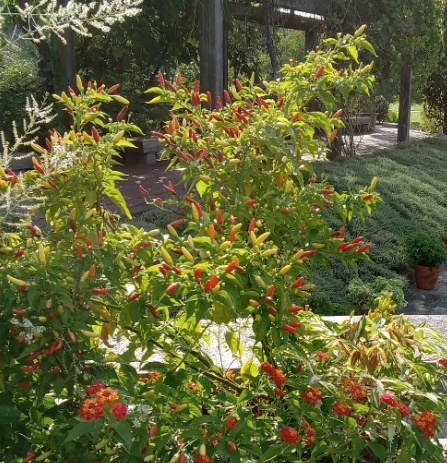
Capsicum frutescens ‘Tabasco’
As someone with a love of horticulture, I wish that I had studied Latin in high school. It is such an integral part of knowing plants well. Instead, I studied Spanish, which has been useful as I work in the landscape industry in the South and am able to put it to use on a daily basis. Yet, it is never too late to learn something new. I’ll probably never get into Latin conjugations or reading texts in Latin, but learning a bit of the vocabulary is very helpful and, to me, very interesting. Thus, I’m writing a series of articles on Latin words and how they relate to plants and botanical nomenclature in order to learn more and to share with you. Let’s start with a look at Latin words used in botanical names to relate to the senses. Here is a list of some that relate to the senses of taste and sound:
acerbus—harsh or sour tasting
acetosellus—slightly acid
acris—acrid
amarus—bitter
blandus—mild; not bitter; pleasing
capsicum—biting to the taste; hot (as in peppers)
causticus—burning to the taste
cibarius—edible; useful for food
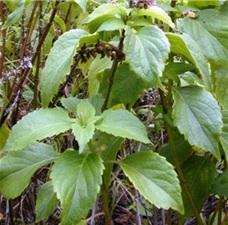
Ocimum gratissiumum, clove basil–a “very pleasing” basil indeed
cynara—bitter to the taste
dulcamara—bittersweet to the taste
edulis—edible
emeticus—emetic
esculentus—edible; tasty
gratissimum—very pleasing; agreeable
saccharinus—sweet; containing sugars
saccharum—of sugar
sapidus—savory; pleasing to the taste
Examples of use:
Capsicum frutescens – (chile pepper) shrubby plant with fruit biting to the taste
Colocasia esculenta – (taro) tropical plant with large, edible corms
Cynara cardunculus – (cardoon) bitter plant resembling a thistle
Passiflora edulis – (passion fruit) passionflower with edible fruit
Solanum dulcamara – (bitter (deadly) nightshade) – bitter because it is poisonous
Note: Any time we use a scientific species name it should be italicized (note the names above). The Latin binomial naming system is used to describe a species of plant, animal, bacterium, fungus, or other living organism. The first of the two names is the genus name and the second is the specific epithet. Together, they give us the species name. As humans, our genus is Homo and our specific epithet is sapiens. Thus the species for humans is Homo sapiens.
I only found one botanical Latin word that relates to sound:
onopordum—meaning “ass-fart”
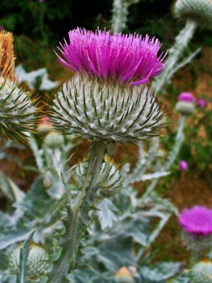 Onopordum acanthium is the Scotch thistle – a stately emblem of its country. It is reputedly eaten by donkeys (asses) and results in flatulence (farting). If you know of any other botanical Latin names that relate to sound, please let me know. I’d like to add more to this list. Could they possibly be any more intriguing than this one?
Onopordum acanthium is the Scotch thistle – a stately emblem of its country. It is reputedly eaten by donkeys (asses) and results in flatulence (farting). If you know of any other botanical Latin names that relate to sound, please let me know. I’d like to add more to this list. Could they possibly be any more intriguing than this one?
I’ll be writing more about how Latin words relate to the other senses, colors, shapes, habitats, origins, and more with an emphasis on herbal plants. Hopefully, you will learn a few things and come to see how a bit of knowledge about these words makes botanical nomenclature more understandable and less daunting.
There are some good books on the subject if you want to learn more than what I am able to write about in these blogs. Here is a list of some I find useful and have used as references:
Bird, Richard. 2015. A Gardener’s Latin. London, England : National Trust.
Harrison, Lorraine. 2012. Latin for Gardeners. Chicago, IL: The University of Chicago Press.
Neal, Mill. 1992. Gardener’s Latin. Chapel Hill, NC: Algonquin Books of Chapel Hill.
Medicinal Disclaimer: It is the policy of The Herb Society of America, Inc. not to advise or recommend herbs for medicinal or health use. This information is intended for educational purposes only and should not be considered as a recommendation or an endorsement of any particular medical or health treatment. Please consult a health care provider before pursuing any herbal treatments.
Photo Credits: 1) Capsicum frutescens ‘Tabasco’, Tabasco chile pepper (C. Moore); 2) Ocimum gratissimum, clove basil (author); 3) Onopordum acanthium, Scotch thistle (author).
Henry Flowers is a native Texan but was raised in the Middle East, where he developed a love for anything that is green and growing. He has a B.S. degree in Horticulture and a M.Agr. degree in Floriculture from Texas A&M University. He worked for 12 years at the Antique Rose Emporium and was Garden Director at the Round Top Festival Institute for 16 years. Henry is an Herb Society of America Member at Large and a Joanna McQuail Reed Award for the Artistic Use of Herbs recipient. He loves to do just about anything that relates to gardening, but has a particular love for growing herbs and using them in the kitchen and home.
By: The Herb Society of AmericaTitle: A Little Bit of Latin: Taste and Sound
Sourced From: herbsocietyblog.wordpress.com/2024/02/26/a-little-bit-of-latin-taste-and-sound/
Published Date: Mon, 26 Feb 2024 08:00:00 +0000
Frequently Asked Questions
Is it okay to use dried herbs instead of fresh ones?
It is best to pick up fresh herbs whenever possible when using herbs.
Although dried herbs are convenient, they don’t provide the same benefits as fresh herbs.
Fresh herbs contain essential oils that give your food a unique flavor. These oils help preserve the nutrients within the herb.
Dried herbs lose all their flavor after drying, so they cannot replace fresh herbs.
You should only use dried herbs if you absolutely must. Otherwise, you should get your fresh herbs from the market.
What is the difference between basil and oregano?
Both of these herbs belong to the Lamiaceae family. They share similar flavors, but the differences are obvious.
Oregano is more pungent than basil. It also adds an extra layer of flavor to foods.
Basil leaves are smaller than oregano leaves. They are also softer and less aromatic.
The two herbs are often used interchangeably. Although they are quite similar, each has its distinctive qualities.
Which spices from the kitchen are used to cure diseases?
There are more than 4000 medicinal plants that are widely distributed throughout the world. Some of these plants contain active compounds that may help treat various ailments.
In India alone, there are more than 1000 species of herbs that are used for medical purposes. This includes Ayurvedic medicine, Unani medicine, Siddha medicine, Homeopathic medicine, and Chinese medicine.
The most common ingredient found in these medicines is ginger. Ginger contains volatile oils that give it its aromatic flavor. These oils contain anti-inflammatory properties that make them useful against arthritis, fever, vomiting, and indigestion.
Ginger also helps relieve nausea and stomach cramps caused due to pregnancy. Pregnant women often consume ginger tea to reduce morning sickness. Ginger is also commonly used for cough and cold relief.
Another spice that is known to have medicinal value is turmeric. Turmeric contains curcumin which has been shown to inhibit tumor growth. This makes it an effective cancer treatment.
Turmeric is also considered to be very beneficial for joint health. It relieves inflammation and stiffness associated with rheumatoid arthritis. It is also believed to prevent osteoporosis.
Garlic, too, is another herb that is extensively used in traditional medicine. Its healing qualities include treating infections, asthma, heart disease, and diabetes and even reducing cholesterol levels. Garlic oil is also used to treat wounds and insect bites.
Garlic is a natural antibiotic that fights bacteria and viruses. The antibacterial property makes it ideal for treating respiratory tract infections such as bronchitis and pneumonia.
It is also helpful in preventing urinary tract infections.
Other spices like cinnamon, cloves, nutmeg, cardamom, black pepper, ginger, cayenne, mustard seeds, fennel, and coriander are also used to treat different illnesses.
How is basil used for medicinal purposes?
In ancient times, doctors would prescribe basil leaves to treat colds and coughs. Today, basil contains powerful anti-inflammatory properties, making it an ideal remedy for arthritis, asthma, bronchitis, eczema, gout, hay fever, indigestion, migraines, menstrual cramps, sinus infections, sore throats, ulcers, varicose veins, and more.
Basil is also known for its ability to help protect against cancer, heart disease, diabetes, skin conditions, and even aging.
Basil is often referred to as "the herb of grace" because it helps us relax and unwind after stressful situations. It is also said to improve memory and concentration, boost energy levels, increase libido, and enhance athletic performance.
The list goes on and on. Basil is a versatile plant that offers a wide range of benefits for our health and well-being.
Statistics
- Herbs are among the most popular and widely used medicinal remedies. According to a survey conducted by the National Institutes of Health, herbs were used by over 38% of adults in the United States.
- For those with high cholesterol, garlic supplementation appears to reduce total and/or LDL cholesterol by about 10-15% (72Trusted Source73Trusted (healthline.com)
External Links
[TAG24]
[TAG26]
- Antioxidant capacity of 26 spice extracts and characterization of their phenolic constituents - PubMed
- Cinnamon: A Multifaceted Medicinal Plant - PMC
[TAG29]
[TAG31]
How To
What to look for in herbs?
Herbs contain natural compounds that may help treat various conditions. In addition, herbal remedies may provide relief when used along with conventional treatments.
Herbal remedies include teas, capsules, tablets, ointments, creams, lotions, oils, and topical applications. Some of these products are meant to be taken internally, while others are applied externally.
The most common uses of herbal remedies include relieving minor aches and pains, treating cold symptoms, reducing fever, controlling coughs and sore throats, easing digestion problems, soothing skin irritations, alleviating menstrual cramps, and providing general health benefits.
When buying herbs, look for the following:
- Freshly picked plants. Avoid dried herbs unless they've been stored in a cool place. If possible, buy herbs directly from farmers' markets.
- Pure extracts. These are made by extracting the active ingredients from herbs using alcohol or water. Look for 100% pure extractions.
- Certified organic herbs. Organic herbs must meet strict standards set forth by the USDA.
- Natural flavors. Many herbs have strong scents that can overwhelm other foods. Adding flavorings such as vanilla, almond, or orange helps mask their smell.
- Potency. The amount of active ingredient per unit weight varies depending on the type of herb.
- Packaging. When purchasing herbs, check the packaging to ensure that it's clean and free of chemicals.
Resources:
 |
[TAG33]In this video we are starting out seedlings for our winter growing in the Tower Garden and we're taking you along for the journey! We'll show you just how easy |
 |
[TAG34]Hope you enjoyed this video and thank you for your support. Don’t forget to like, share and subscribe. PLEASE FOLLOW ME IN FACEBOOK https://www.facebook |
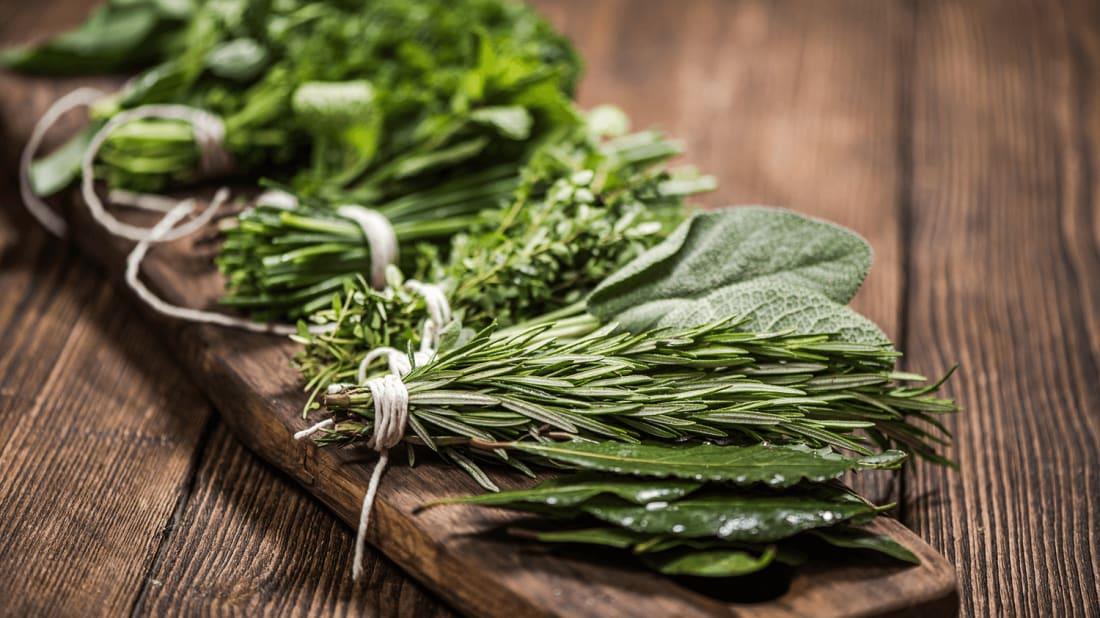 |
[TAG35]Learn herbs from respected professional herbalists offering world-class herbalist training. The NEW Professional Herbalist Course includes courses on over 600 |
 |
[TAG36]Who was the Marble Looking Man? Paul Sinclair shares his accounts of unusual and strange happenings in an around East and North Yorkshire. We now have |
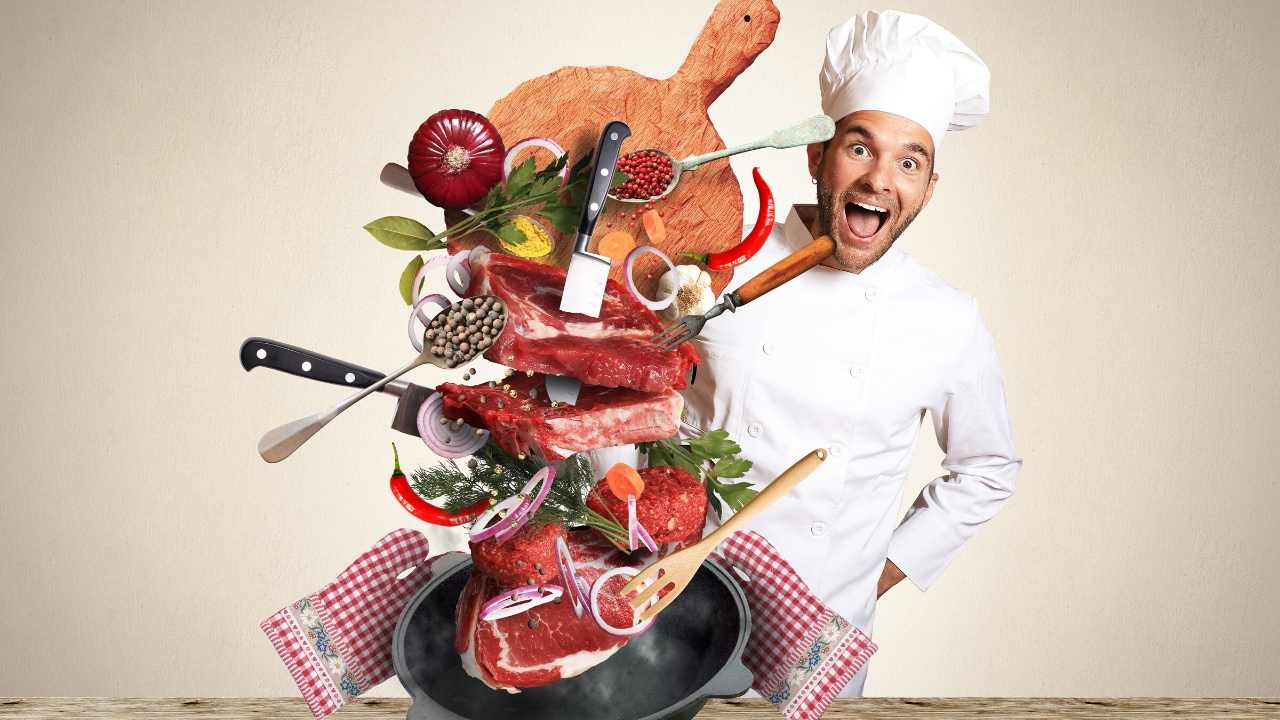 |
[TAG37]COFFEE MOANING the PODCAST ON APPLE PODCASTS: https://podcasts.apple.com/gb/podcast/coffee-moaning/id1689250679 ON SPOTIFY: |
 |
[TAG38]Find out more about herbs and how to use them |
 |
[TAG39]Are you eating healthy bread? If so, this video is a must-watch before you take another bite of those seemingly innocent slices. Bread might be a staple, but |
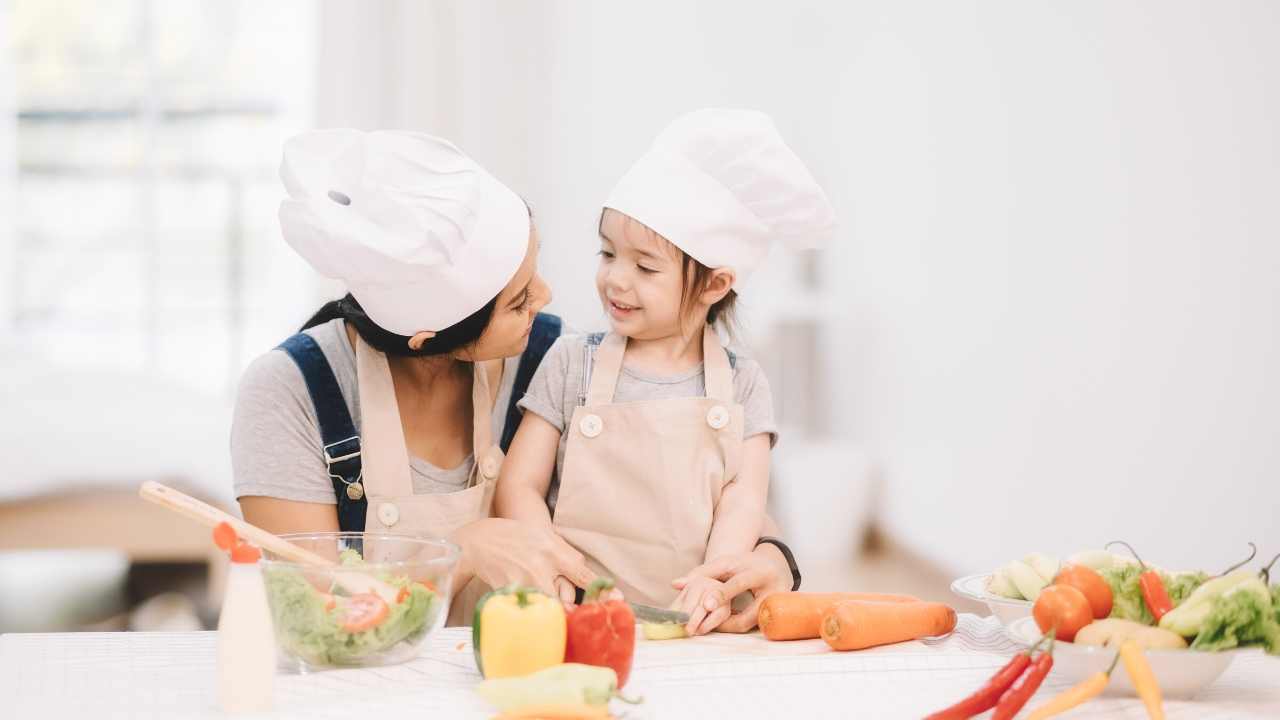 |
[TAG40]Patrick Bet-David, Adam Sosnick, Tom Ellsworth and Vincent Oshana discuss Bill Maher's appearance on Roseanne Barr's podcast where he denies knowing MK Ultra, |
 |
[TAG41]Like life, tea is what you make of it and The Cup of Life helps individuals enjoy tea in more than one way. Join me on my tea adventures through my blog! |
 |
[TAG42]Use Code THOMAS25 for 25% off Your First Order from SEED: https://www.seed.com/thomasyt Obesity Pandemic - Willpower vs Genes vs Environment This video |
 |
[TAG43]Harvesting self-grown vegetables - bursting with emotions when the old lady handed over the red book Thank you for watching my video. Wishing you good health, |
 |
[TAG44]A tea assessment platform that rates teas based on objective quality markers and a sensory evaluation resulting in a list of the best teas produced each year. |
 |
[TAG45]In This Video I'm Gonna Show You How To Find And Farm All 7 Herbs In Terraria! Enjoy ! :) #terraria #guide #tutorial |
 |
[TAG46]Former President Trump in recent remarks is now working to portray President Biden as a threat to democracy, saying Biden 'is the destroyer of American |
.png)





